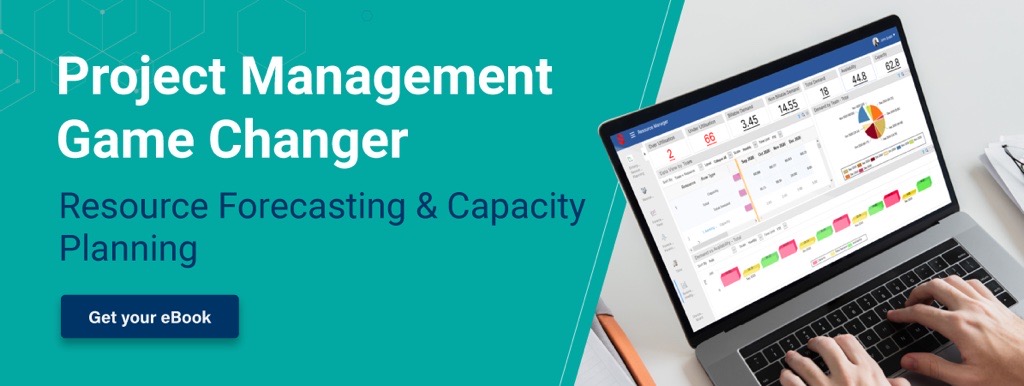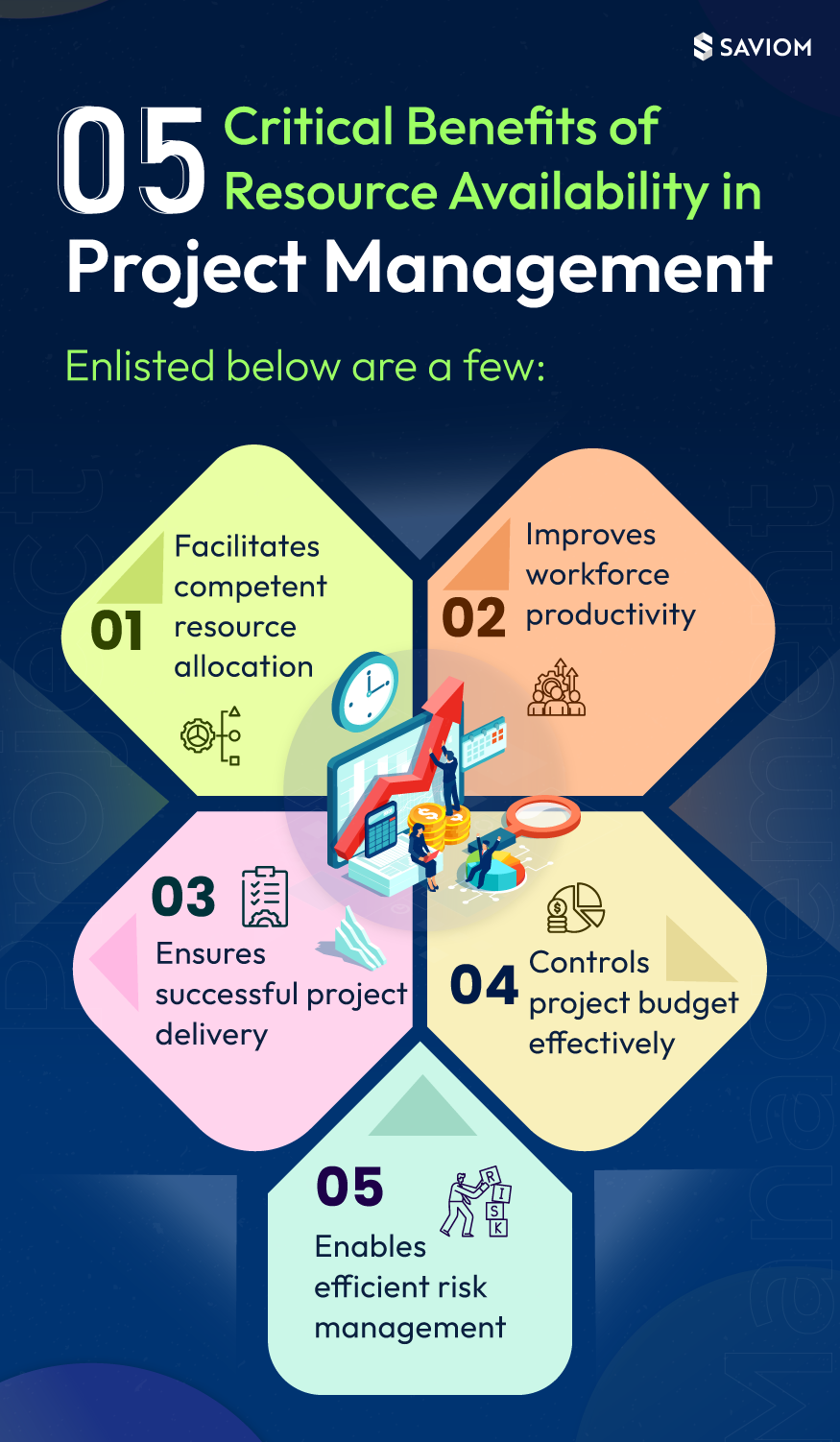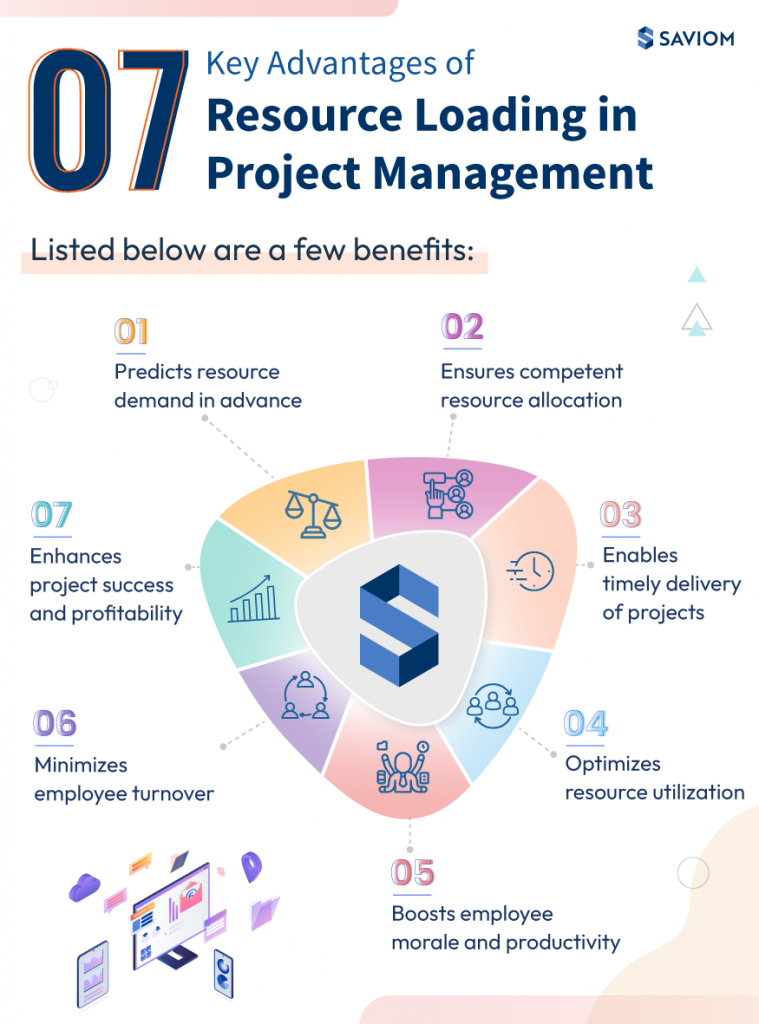Have you ever completed a project without encountering any setbacks?
Certainly not. Regardless of the myriad process and practices in place, it’s impossible to experience a smooth journey of project execution.
The question is, what is the reason behind these pitfalls? Why do they even surface in the first place?
As we know, project management is an amalgamation of predefined steps carried out in a sequential manner to ensure successful execution. From project planning and scheduling to risk management, it constitutes every process that can streamline the delivery.
A PWC survey also reveals that 97% of CEOs agreed that effective project management is critical to business performance and organizational success.
Looking at the number of steps involved, it’s evident that a project manager plays multiple roles and is responsible for following each practice diligently. However, it’s easier said than done. Amid the pressure to do justice to each of these processes, they tend to make some mistakes unknowingly.
While these errors and mistakes initially seem trivial, they can potentially turn into major bottlenecks if not addressed timely. It can eventually lead to an abrupt halt in the project’s execution or even a complete failure.
Thus, it’s imperative to beware of these mistakes beforehand and learn ways to avoid them. This blog highlights the most common project management mistakes, their repercussions, and the practices to steer clear of them.
But before delving deep, let’s find out:
Common mistakes a project manager makes
PWC’s research reveals that bad estimates/missed deadlines, unmanaged scope change, and insufficient resources comprise 50% of the project failure.
Therefore, a project manager must avoid certain mistakes to keep these repercussions from influencing the project’s success.
Below listed are a few common ones.
Not defining project scope clearly
Project scope is a comprehensive outline of all aspects of a project from its initiation until its completion. It comprises all the tasks, activities, resources, timelines, deliverables, etc., involved in a project’s successful execution and delivery.
Since scope outlines the roadmap of the project, it can lead to incorrect project planning and execution if not defined clearly.
A poorly defined scope can also lead to inaccurate resource estimation and scheduling errors that can trickle down to sub-optimal resource utilization, failures in achieving milestones, compromised project quality, etc. It can also lead to ambiguities in understanding the individual roles and responsibilities. Further, without clearly defined milestones and deliverables, it’s arduous for project managers to define the KPIs and track their progress. All these factors can cumulatively cause time/budget overruns, loss of engagement and productivity, misalignment in deliverables and clients’ expectations, etc., hampering the project delivery.
Incorrect selection of the project management methodology
Every project has certain traits that deem it fit for a particular project methodology. Project managers assess every project and its attribute before adopting the most appropriate ones. The most prominent methodologies include waterfall, scrum, agile, Kanban, etc. For instance, for projects with a definitive pathway that require minimal to no large-scale ad-hoc changes, the waterfall method is generally an ideal choice.
Deploying a method that doesn’t align with the project’s characteristics can lead to severe repercussions, ultimately disrupting the delivery process. Besides, it also causes other issues like difficulty in managing stakeholders’ concerns, resource-related risks, and other constraints, adversely impacting the project’s lifecycle.
Inaccurate and last-minute resource requisition and scheduling
Resource scheduling involves identifying and assigning resources for a given period to different tasks based on their skill set and competencies. Project managers sometimes fail to assess the project requirements and requisite skills accurately. It results in incompetent resource allocation, which affects the timeline, budget, and produces deliverables of substandard quality.
Often, the project manager requests the right resources but at the eleventh hour. As a result, it causes last-minute firefighting for competent resources causing schedule and budget overruns. In worse case scenarios, if a critical task position is not filled on time, the project’s performance may suffer, causing a cascading effect on the interdependent tasks, further hindering the project’s progress.
Delayed decision-making
Beginning a project with the right resources is only half the battle won. To make every endeavor successful, it is imperative to track its progress in real-time. However, managers often overlook this process and do not procure real-time updates of the KPIs. As a result, they end up missing issues or challenges surfacing during the project’s course.
For instance, due to a lack of quick updates, they might notice a delay in a task only when it causes a ripple effect on the subsequent ones. It will compel them to take a reactive approach since they didn’t stay forewarned of the KPIs, leading to delayed decision-making. Over time, this negligence or laxity aggravates the existing issues further, causing complete project failure.
Failure to manage scope change
Scope change is a controlled process that involves adding a new feature or functionality to a product or project after analyzing its impact on the other project constraints. Accordingly, alterations and adjustments are made to schedules and the project resource plan. Thus, a meticulously formulated scope management plan is imperative to avoid scope creep. Unfortunately, one of the major mistakes that project managers make is that they start a project without a well-defined scope management plan.
Due to this, they fail to accommodate the changes on time that come after the initiation of the project. Moreover, they often convey and discuss the scope change with the change control board (CCB) at the eleventh hour. It worsens the situation further as the CCB does not get enough leeway to evaluate the changes. In the end, it results in scope creep, which affects the quality, timeline, or budget, causing the project to derail.
Lack of transparency with stakeholders and teams
It’s imperative for project managers to keep the stakeholders in the loop as the project’s success highly concerns them. But sometimes, the project manager focuses on working out the mitigation strategies themselves, giving rise to a lack of transparency. However, when these pressing matters go beyond control and the project manager has to convey everything all at once, it is already too late. It not only causes budget or time overshoot but also jeopardizes the organization’s credibility and reputation.
The other mistake is poor communication with team members. If a project manager doesn’t convey the changes, decisions, and expectations at the right time, it leads to a communication gap. It causes a lack of clarity and visibility into what needs to be done and causes misalignment between the teams’ efforts and the project goals.
Inaccuracy in timely risk assessment and mitigation
Risk analysis and mitigation involve identifying the possible risks in a project and devising a strategy to minimize them. There are various risk events like scope creep, skill shortages, unplanned attrition, budget/schedule overruns, etc. If not mitigated proactively, they can become issues creating obstacles in project completion. Thus, failure to create a risk mitigation plan in advance or diligently assess and evaluate potential risks can be added as one of the significant mistakes a project manager can commit.
In other instances, they do not follow a standard framework for risk management. It implies that they don’t form a well-defined sequence of necessary steps like identifying and assessing risks, and creating the right mitigation strategies for the same. In either of the situations, poor management of risks can derail the project.
Excessive reliance on individual excellence
A project team consists of a combination of experienced and multi-skilled members and fresh talent in an appropriate mix. Project managers, at times, are biased towards certain high-performers or resources they have worked with before and assign them most of the responsibilities. It, therefore, leaves fewer tasks for the others on the team. But in cases where these key resources go on unplanned leave or resign suddenly, the project flow gets disrupted. The result is a sudden increase in stress and burnout for others, which impacts their productivity and the project’s timeline.
Besides, when the project manager gives more importance to only certain resources, the other team members may feel less valued. It can lower their morale and confidence, thereby affecting the team’s cohesiveness and productivity. All these factors can turn into a major setback for the project’s progress.
Now that you are familiar with common project management mistakes and their impact, let’s look at the ways to avoid them.
How can a project manager avoid these mistakes?
It is evident that some mistakes can have significant repercussions on the final project delivery. So, it is crucial to understand how to avoid these mistakes and prevent a project failure.
Here are some proven tips you can leverage to achieve the same.
Make documentation a continuous activity
Documentation at every stage contributes to the success of a project. It enables you to look into every project’s attribute at a granular level and prevents you from overlooking any important detail. So, to start with, the project manager can prepare a Project Initiation Document (PID). It contains critical information, including project scope, deliverables, dependencies, assumptions, timelines, milestones, key responsibilities, budget, approach, etc. This document is crucial as it specifies what needs to be done and sets the baseline against which you can compare the progress.
Next, you should create a work breakdown structure where you enlist the tasks and sub-tasks and estimate the resources for each of them. After the project finally starts, it is important to track its progress and document important changes and details regarding budget, timelines, etc. It helps find the extent to which it aligns with initial expectations and proactively mitigate any foreseen risks to keep the project on track. In the end, you should create a project closure report to document your findings, challenges faced, and the approach you adopted for a reference for similar future projects.
These documents help take a data-driven approach with accurate details in place, negating room for errors and ultimately securing the project’s success.
Consider project characteristics and lessons learned to arrive at the right method
A project management methodology is a combination of various practices, principles, and techniques followed to ensure optimum project performance.
Selecting the project management methodology is crucial to a project’s success as it sets the tone for the whole project lifecycle.
Thus, project managers should assess the project’s requirements, objectives, team’s structure, and detailed characteristics before selecting the appropriate methodology.
Choosing the right project management method provides numerous benefits. First, it helps you define standard protocols and practices for project execution and keeps the team on the same page. Second, it helps accommodate necessary changes seamlessly and combat various constraints, risks, and challenges effectively to prevent the project from derailing.
Maintain a regular communication channel with the resource manager
A project manager should develop and maintain a consistent communication channel with the resource manager as they are responsible for fulfilling the project resource demand. When a project reaches a highly probable stage and you start drafting a work breakdown structure, assess the resource requirements thoroughly. Based on that analysis, you can initiate resource requisition and provide enough lead time to resource managers to procure the right talent.
When the right resources are available beforehand, it prevents last-minute resourcing challenges and controls the project budget. Moreover, timely procurement of competent resources streamlines the whole execution, ensures quality and timely delivery.
Follow data-driven approach to take critical decisions on time
A data-driven approach is vital for a project’s success as it enables managers to make informed decisions backed by relevant and precise information. Managers can implement the right tools to obtain real-time information on the necessary project and resource metrics. For example, using a resource management tool, they can see forecast-vs-actual utilization reports that give an insight into the variance of planned and actual utilization of resources.
If you find a resource taking longer than estimated to complete a task, you will stay informed ahead of the curve and thus, can take remedial measures in time. Besides, forecast-vs-actual financial reports help find out if there are any areas where the actual budget is exceeding the initial forecasts. You can then determine the reasons behind these cost overruns and take appropriate corrective steps to control the budget before it causes the project to fail.
Regularly interact with CCB for any scope change
Though the project initiation document is finalized at the start of the project, a client may request modifications during the course of a project. In such a scenario, active tracking and discussion around scope changes are vital to prevent scope creep. While it is possible to accommodate small changes easily, large changes often need informed analysis.
Thus, first and foremost, managers should formulate a change management strategy that will outline the impact of the ad hoc amendments and necessary steps to incorporate them. This should be conveyed to the change control board (CCB), who is responsible for taking the final call after careful evaluation of the requested changes. If the board finds these changes feasible, managers can proceed and incorporate them into the project.
Prepare a schedule for timely communication with stakeholders and teams
Regular meetings with team members are important to keep them informed of the project’s updates. You can gather their inputs regarding the project’s execution and ask if they are facing any specific challenges. At the same time, managers should provide their feedback on the project’s progress and convey the pressing matters. It will help the team members rectify the setbacks, if any, ahead of the curve. Moreover, these regular meetings provide a platform to brainstorm and resolve the project bottlenecks collectively.
Furthermore, regular meetings with stakeholders are also necessary to keep them abreast of how the project is progressing.
Project managers often tend to overlook small hurdles that can later turn into significant roadblocks. One must make it a point to convey all the issues to your stakeholders right from the beginning. It will help you sustain your stakeholders’ trust and acquire the requisite support and approval to implement strategies at ease.
Develop a risk assessment and mitigation plan from the project initiation stage
It is vital for a project manager to formulate a robust risk assessment and mitigation plan right at the initiation stage. For a solid risk management strategy, forecasting all the resource-related risks is crucial. Managers can use issues or risk templates to record the risks, their severity, and probability in an organized manner. Additionally, managers can create and equip a risk management framework to follow a systematic protocol for the same.
It not only gives you a clear idea of associated risks but also helps categorize them into high-priority, medium-priority, ad low-priority. These templates will help identify the nature and types of issues and risks associated with the project and evaluate their severity. After a meticulous evaluation of each risk, you can write your action plan against each one of those. This plan ensures that reasonable control measures are implemented well in advance to minimize or negate the impact of risks.
Follow an effective process-dependent delivery approach
Instead of keeping your delivery approach resource-dependent, you should keep it process-dependent. It implies that you should not rely on just a handful of resources with high levels of experience for various processes. Rather, you should equip every process with an appropriate mix of resources of varying levels of expertise and hierarchy. When every process gets the right resource mix, it helps reduce excessive dependence on critical employees, amongst other benefits.
For instance, it reduces the extra burden on individual high-performers and enables them to work more efficiently with an undivided focus on limited tasks at a time. It also gives equal opportunities to all the resources with limited experience to contribute to the project and prove their mettle. Moreover, the project manager also gets an idea of the resources who need upskilling and training programs to take on future endeavors.
Over to you
Error-free project management and execution is a myth. After all, to err is human. Mistakes are inevitable, however, that’s not to say that these are unavoidable. Project managers can act proactively, identify the pitfalls, and take conscious measures to avoid them and prevent a catastrophic effect on the project’s progress.
This article serves as a handbook for project managers to keep them aware of the most common mistakes and ways to avoid them with proven practices. It will help them keep every project on the right track and ensure its successful delivery.
What ways do you follow to avoid these mistakes?
The Glossary
The SAVIOM Solution
SAVIOM has over 20 years of experience helping multinational clients manage their resources efficiently and effectively. With over 20 years of experience, this Australian-based MNC has a global presence across 50 countries and has helped 100+ clients meet their specific business goals. Saviom also provides tools for project portfolio management, professional service automation, and workforce planning software. So, SAVIOM can help your business to establish an efficient system geared towards your specific business challenges.

















